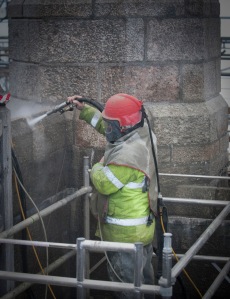In 1883 Julius Drewe and his partner John Musker opened their first Home and Colonial Store, and within 12 years there were 107 stores all over the country. So successful was Julius that he was able to retire aged only 33. When he sold his remaining shares in 1919, they realised £1 million! John Musker also became a country gentleman, becoming a breeder of fine English racehorses with a superb mansion at Shadwell Park in Norfolk.
When Drewe and Musker opened their first shop on the Edgeware Road they established a layout and design- or ‘brand image’- that would identify Home and Colonial shops wherever they appeared. Here the marketing instincts of Musker no doubt played a significant part since he knew the importance of making the shops ‘stand out’ in a High Street full of shops with similar frontages. As a result Home and Colonial Stores appeared in prominent positions in the high street and were usually large, glass fronted places with the company name prominently displayed above in large gold letters on a black background.
On the inside, the shop was large and laid out so as to give the customer ample room to browse while waiting to be served. From the early days right up until the end of World War Two, shopping for groceries was a much more leisurely process than it is today and every customer expected to be served by a qualified shop assistant who would attend to their every needs from start to finish. The shop floor was usually tiled and lightly covered with sawdust to keep it clean and dry, and swept at regular intervals during the day. The counter was marble-topped and had a small glass screen to separate the assistants from the customer thus minimising the risk of bacterial infection. Cheese was sold from here and in those days dairy products were not pre-packaged. The shop assistants individually cut and weighed and wrapped cheese, bacon and butter. Peak Frean’s biscuits were always in evidence in the store. The biscuits came in 12-inch tin boxes and the various flavours were usually spread out in a circular arc just in front of the counter. The customer selected and the assistant weighed them out.
To complete the in-shop image the staff were always immaculately dressed. The shop manager in a dark suit with mandatory collar and tie, and the assistants wore white jackets with collar and tie plus full length, and were checked every morning.
As employers, Home and Colonial Stores were second to none. They paid meticulous attention to staff training both at managerial and floor level. Witness to this is the existence of a large training college in Wood Green, London.




